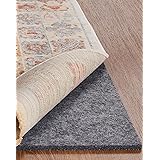Transforming an outdated kitchen into a functional and aesthetically pleasing space often seems like an insurmountable task, especially when budget constraints loom large. However, as vividly demonstrated in the accompanying video, a DIY kitchen renovation can be both achievable and incredibly rewarding. Many homeowners and property investors are discovering that with strategic planning, a commitment to hands-on work, and a keen eye for value, a dream kitchen doesn’t have to break the bank. This comprehensive guide builds upon the insights shared in the video, delving deeper into the processes, decisions, and creative solutions that can lead to a stunning, budget-friendly kitchen transformation.
The journey from a cramped, uninspiring kitchen to an open, modern culinary hub is a testament to the power of vision and determination. It involves more than just swapping out cabinets; it necessitates a complete reimagining of the space, much like an artist starting with a blank canvas. This approach prioritizes maximizing impact while minimizing expenditure, focusing on areas where DIY efforts yield the greatest return.
Strategic Planning and Demolition: The Foundation of an Affordable Kitchen Remodel
Before any demolition begins, a thorough planning phase is paramount. As the video highlights, the “before” state of a kitchen often presents challenges such as limited counter space and an inefficient layout. The initial vision for this particular kitchen involved removing a significant wall, a decision that radically altered the entire flow and perception of the space. Such structural changes, however, demand careful consideration and adherence to safety protocols.
Furthermore, an accurate assessment of structural elements is crucial. Prior to taking down any wall, it is imperative to confirm that it is not load-bearing. This often requires consulting with a structural engineer or a knowledgeable contractor, as compromising a load-bearing wall could have severe, even catastrophic, consequences for your home’s integrity. Think of it as ensuring the foundation of a skyscraper is sound before altering its internal structure; the risks are simply too high to overlook.
Moreover, homeowners of older properties must exercise additional caution. Plaster walls, common in homes built before the 1980s, may contain asbestos. Therefore, before disturbing any plaster, especially during demolition, professional testing for asbestos is a non-negotiable step. This preventative measure safeguards not only the homeowners but also anyone who might occupy the space in the future, much like a meticulous chef checks ingredients for allergens before preparing a dish.
Designing Your Dream Layout on a Budget
Once structural integrity is confirmed and safety precautions are in place, the creative process of designing the new layout can begin. While drawing out ideas on paper provides a vital starting point, many find that the truest inspiration strikes when observing a completely blank slate. This allows for a dynamic interplay between initial concepts and the practical realities of the physical space, enabling on-the-fly adjustments that optimize flow and functionality.
The Art of Seamless Integration: Drywall and Patching
The removal of a wall, while transformative, inevitably leaves behind a visible gap that needs to be seamlessly integrated. Patching and repairing drywall is a skill that many DIYers find challenging, yet highly rewarding. It demands precision, patience, and practice to achieve a finish that makes it appear as if a wall never existed there at all. This process is akin to mending a torn fabric; the goal is for the repair to be imperceptible, making the two adjoining rooms appear as one unified entity.
Drywall installation and finishing can be an unexpectedly strenuous task, often requiring significant physical effort, particularly for overhead work. Many compare it to a full-body workout, where arm and shoulder strength are put to the test. Despite its difficulties, mastering drywall offers substantial cost savings and a deep sense of accomplishment, much like a sculptor who painstakingly smooths out imperfections to reveal a flawless surface.
Foundation of Style: Cabinets and Customization for an Affordable DIY Kitchen Renovation
For an affordable DIY kitchen renovation, cabinet selection represents one of the most significant budget categories. The video highlights the excellent value and quality found in IKEA cabinets, a choice frequently made for rental properties due to their durability and cost-effectiveness. The complete set of IKEA cabinets, including all necessary hinges and hardware, was acquired for under $2,000 for this kitchen. This contrasts sharply with the often exorbitant costs of custom cabinetry, making IKEA a compelling option for budget-conscious renovators.
Furthermore, IKEA’s modular system allows for extensive customization. In this renovation, the peninsula cabinets were sanded down and painted a striking green, introducing a vibrant contrast and a personalized touch that elevates the entire aesthetic. This act of painting is similar to adding an accent wall in a room; it creates visual interest and injects character without requiring a complete overhaul.
Crafting Unique Surfaces: The Appeal of Concrete Countertops
Countertops are another area where costs can quickly escalate. Opting for DIY concrete countertops, as showcased in the video, presented a substantial project but yielded remarkable savings. At an impressive cost of just $500, these custom concrete surfaces provided a durable, industrial-chic aesthetic that would have been far more expensive with traditional materials like quartz or granite. This decision is much like choosing to bake your own artisanal bread instead of buying it from a gourmet bakery; the effort is significant, but the satisfaction and savings are immense.
The process of creating concrete countertops is a detailed craft, requiring careful measurements, mold creation, pouring, and extensive finishing. It transforms raw materials into a highly personalized and robust surface, contributing significantly to the unique character of the kitchen. Those interested in the intricate steps involved are encouraged to explore dedicated how-to guides on this channel, as the full scope of the project warrants its own detailed explanation.
Architectural Flair: The Custom Range Hood
Beyond the functional elements, certain design features can serve as powerful focal points, elevating the kitchen’s overall appeal. The custom range hood, sourced from Archway and Ceilings, exemplifies this principle. Shipped pre-fabricated to precisely fit the space and then finished on-site, this piece cost approximately $400. Its custom nature allows for seamless integration into the kitchen’s design, becoming an architectural element rather than merely a utilitarian appliance. It acts as the centerpiece of a wall, drawing the eye and anchoring the entire design, much like a statement piece of art in a gallery.
Backsplash Brilliance: Brick vs. Tile for Visual Impact
The choice of backsplash plays a crucial role in defining the kitchen’s character and protecting walls from splashes. While subway tile is a perennially popular and affordable kitchen renovation option, the video features a brick backsplash that perfectly complements the desired industrial aesthetic. These plaster bricks are lightweight and exceptionally easy to install, making them an accessible DIY choice. The decision between brick and tile is often a matter of balancing desired texture, pattern, and maintenance, similar to selecting between different fabrics for upholstery – each offers distinct qualities and visual effects.
Functional Aesthetics: Smart Storage and Flow Solutions
An affordable DIY kitchen renovation is not solely about cost savings; it is equally about enhancing functionality and flow. Floating shelves, for example, offer both open storage and visual lightness, which is particularly beneficial in rental properties like an Airbnb. Guests can easily locate glasses, plates, and dishes, streamlining their experience. This concept is much like organizing a library by genre; it makes everything intuitively accessible.
For larger L-shaped kitchens, a movable island can be an invaluable addition. The custom-painted IKEA island demonstrated in the video provides flexible extra counter space and storage at an economical price point. Its mobility allows for adaptable use of the kitchen area, an advantage reminiscent of rearrangeable furniture in a multi-purpose living space.
Furthermore, awkward spaces, often found beside pantries or at the ends of cabinet runs, present opportunities for clever built-ins. Creating a custom-built solution, such as a chalkboard wall or a hanging garden, transforms these formerly neglected areas into charming and functional features. For Airbnb properties, a chalkboard wall can be used to display Wi-Fi passwords or welcoming messages, adding a personal and practical touch, much like a welcoming note left for guests in a boutique hotel.
The Finishing Touch: Staging for Maximum Impact
Upon completion of an affordable DIY kitchen renovation, the final step involves staging the space. This is not merely an aesthetic exercise; it is a strategic one. Professionally staged kitchens photograph exceptionally well, which is vital for creating compelling online listings for rentals or future property sales. Even for long-term rentals, high-quality photos secured at this stage will serve as valuable marketing assets for years to come. Staging breathes life into the renovated space, allowing potential tenants or buyers to envision themselves enjoying the kitchen, much like a beautifully arranged storefront entices customers inside.
Weighing the Scales: DIY Versus Professional Expertise
While the allure of cost savings through DIY is strong, it is crucial to objectively evaluate whether undertaking a particular project yourself is truly worthwhile. The video candidly advises homeowners to get quotes from professionals and weigh the costs against the time commitment and required skill set. Many projects, like the concrete countertops or intricate drywall finishing, offer substantial savings if tackled personally. However, some tasks might be too complex, time-consuming, or physically demanding for an inexperienced DIYer, making professional help a more sensible investment.
The decision to DIY versus hiring out is a personal one, akin to deciding whether to repair your own car or take it to a mechanic. It involves an honest assessment of your skills, available time, and the potential for stress. For those new to large-scale renovations, the recommendation to start small—perhaps by tackling a single component like a backsplash or painting cabinets—can build confidence and experience before attempting more extensive projects. Remember, every major renovation is a collection of smaller, manageable tasks. By approaching your DIY kitchen renovation step by step, the overwhelming nature of the entire project can be significantly mitigated, paving the way for a truly rewarding transformation.











